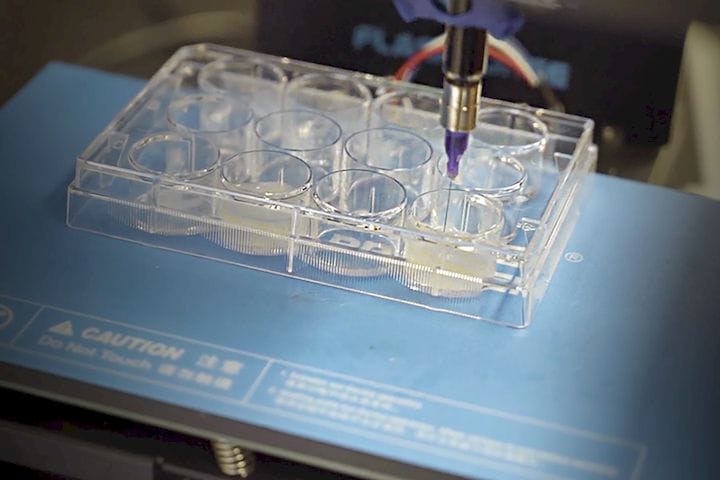![Automatically optimizing 3D printing of soft materials [Source: CMU]](https://fabbaloo.com/wp-content/uploads/2020/05/image-asset_img_5eb0929cc71e7.jpg)
Researchers have developed a machine learning system that apparently automatically figures out how to 3D print correctly.
The problem being solved is that 3D printing is actually extremely complex. I know this for a fact, as I recall the first 3D printer I owned many years ago exposed me to that complexity. While I managed to build the kit machine in about 40 hours (in those days assembly meant soldering, wrapping heater wires and a lot more low-level work), it took weeks of experimentation to even achieve a reasonably well-formed 3D print of a basic cube.
Why so much effort? It’s because there are so many factors at play. While today’s 3D printer operators “see” only the essential 3D print parameters of layer size, infill percentage, flow rate, print speed and a few other key items, there are in reality dozens more factors behind the scenes that control a 3D print job.
In fact, the last time I counted there were well over 200. Probably there are even more today, but I’m not counting anymore.
Complex 3D Print Materials
The problem gets even more complex when you consider the input materials. For basic 3D printers, is this spool of ABS really the same as that other one? What other ingredients have been added to it to form coloration or other properties? And how do those chemicals affect the print parameters?
It’s all very complex and most 3D printer operators simply try a few combinations until the results are “close enough”, and call it a day. Some persist longer and refine the print even better (a process known as “dialing in”), but that’s not where most people want to spend their valuable time.
But is that how print optimization ends? Is there a better way?
It turns out there may be, based on some interesting new research from Carnegie Mellon University (CMU). They attempted to develop a machine learning system that can selection optimal print parameters automatically.
3D Print Digital Twin
It’s done through the use of a “digital twin”, which is a kind of algorithmic echo/simulation of a real scenario that can model reality.
In their conception, the algorithm accepts a series of inputs and applies their domain knowledge of thermodynamics, chemistry and more to provide optimal output. They use a hierarchical machine learning approach.
In these experiments, the CMU researchers focused on the problem of 3D printing soft materials, a challenging topic indeed. Their system was able to provide appropriate recommendations both for 3D printing and composition of the 3D printable material.
Automating 3D Print Parameters
I’m interested in this research because if it proves to work, then there is a possibility we may see far more reliable 3D printers eventually emerge for commercial use. These would be equipped with similar control systems that could help direct operators to use optimal parameters and materials.
But of course, this is only basic research and there is much yet left to do.
Via CMU











A research thesis details the incredibly complex world of volumetric 3D printing. We review the highlights.